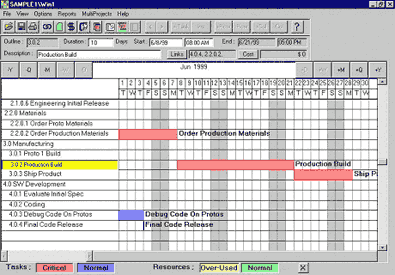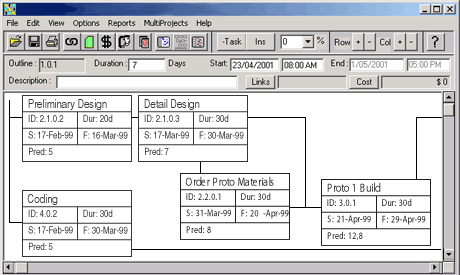အသံုးျပဳမႈမတူညီသည့္ အသံုးျပဳသူမ်ားအတြက္ စာရြက္စာတမ္းမ်ား (Documentation for Different Users)
အသံုးျပဳသူမ်ားႏွင့္ ၄င္းတို႔အတြက္လိုအပ္သည့္ စာရြက္စာတမ္းမ်ားကို ခြဲျခားသိရွိရန္ အေရးႀကီးသည္။ အသံုးျပဳသူမ်ားသည္ စနစ္တစ္ခုကို အသံုးျပဳရန္ ယင္းတို႔တြင္လိုအပ္သည့္ ဗဟုသုတအဆင့္အတန္းေပၚမူတည္၍ အမ်ိဳးအစားခြဲျခားႏိုင္သည္။
၁။ လူသစ္ (Novice)
အျမန္စတင္အသံုးနည္း (Quick Start Guides) ၊ အျပစ္ရွာနည္းအႀကံျပဳခ်က္မ်ား (Troubleshooting Tips) ၊ အေျခခံလုပ္ေဆာင္မႈအတြက္ အဆင့္ဆင့္အသံုးျပဳနည္း လမ္းညႊန္စာေစာင္ (User Manuals That Explain Basic Processes in Detail) တို႔လိုအပ္လိမ့္မည္။
၂။ အလယ္အလတ္ (Intermediate)
နဂိုဗဟုသုတရွိသူဟု သတ္မွတ္ထားသည့္ ပို၍အေသးစိတ္က်ေသာ အသံုးျပဳနည္း လမ္းညႊန္စာေစာင္ (More Detailed User Manuals Which Assume Some Prior Knowledge) ၊ အျပစ္ရွာနည္း အႀကံျပဳခ်က္မ်ားႏွင့္ ရိုးရွင္းသည့္နည္းပညာဆိုင္ရာ လမ္းညႊန္မႈမ်ား (Troubleshooting Guides and Simple Technical Guides) လိုအပ္လိမ့္မည္။
၃။ ကၽြမ္းက်င္သူ (Expert)
ပိုမိုရႈပ္ေထြးအေသးစိတ္က်သည့္ အခ်က္အလက္မ်ားကို ရွင္းျပထားသည့္ လမ္းညႊန္ခ်က္မ်ား (Manuals with Explanation of Complex or Advanced Features) လိုအပ္လိမ့္မည္။
သို႔တည္းမဟုတ္။ အသံုးျပဳသူမ်ား စနစ္တြင္ ပါဝင္ပတ္သက္မႈအဆင့္ျဖင့္ –
၁။ ပညာရွင္ (Expert)
အထူးကၽြမ္းက်င္သူမ်ားအတြက္ အေထာက္အကူျပဳရန္။ ေယဘုယ်အားျဖင့္ စနစ္ကို ျပဳျပင္ထိန္းသိမ္းရန္ Software (သို႔) Hardware Technicians မ်ား။
၂။ အထူးကၽြမ္းက်င္သူမ်ား (Specialist)
အလုပ္ၿပီးေျမာက္ရန္အတြက္ သတင္းအခ်က္အလက္စနစ္မ်ားအေပၚမွီခို အသံုးျပဳ ရသူမ်ား (Users Depend on the Use of Information Systems to Do Their Work) ။ ၄င္းတို႔တြင္ အခ်က္အလက္ထည့္သြင္းစုေဆာင္းသူမ်ား (Data Entry Operators) ၊ Web Developer မ်ားႏွင့္ Graphic Designer မ်ားပါဝင္သည္။
၃။ အကူအေနႏွင့္ အသံုးျပဳသူမ်ား (Adjunct)
အလုပ္ၿပီးေျမာက္ရန္ သတင္းအခ်က္စနစ္မ်ားကို မွီခုိရေသာ္လည္း ယင္းစနစ္သည္ ၄င္းတို႔အတြက္ မရွိမျဖစ္မဟုတ္ေသာသူမ်ား (IT Assists Them in Their Work But Is Not Essential) ၊ ဤက႑တြင္ ေဆးဝန္ထမ္းမ်ား၊ ဆရာ ၊ ဆရာမမ်ား၊ စာရင္းကိုင္မ်ား၊ ေရွ႕ေနမ်ားႏွင့္ စတိုးဆိုင္ မန္ေနဂ်ာမ်ား စသူတို႔ပါဝင္သည္။
၄။ သာမည (Incidentals)
သတင္းအခ်က္စနစ္မ်ားကို ရံဖန္ရံခါမွအသံုးျပဳသူမ်ား (Occasional Users of An Information System) ။ ဥပမာ – ကုမၸဏီ၏ အင္တာနက္ အေျချပဳ ထုတ္ကုန္စာရင္းကို ပစၥည္းမွာရန္ အသံုးျပဳသူ (Customer Using A Company’s Web-Based Product Catalogue To Order Goods) ၊ Point-of-Sales System ကို အခ်က္အလက္ ရယူရန္ အသံုးျပဳသူ (သို႔) Voicemail အသံုးျပဳ၍ Electronic Switchboard ခ်ိတ္ဆက္အသံုးျပဳသူ။
အသံုးျပဳသူမ်ားႏွင့္ ၄င္းတို႔အတြက္လိုအပ္သည့္ စာရြက္စာတမ္းမ်ားကို ျပင္ဆင္ရာ၌ ၄င္းတို႔ နားလည္မည့္ အဆင့္သတ္မွတ္ခ်က္ေပၚမူတည္၍ ေဆာင္ရြက္သင့္သည္။ စာရြက္စာတမ္းမ်ားသည္ ၄င္းအသံုးျပဳသူႏွင့္ အသံုးျပဳသူအုပ္စုအတြက္ နားလည္ႏိုင္မည့္ စာရြက္စာတမ္းမ်ားျဖစ္ရမည္။
×××××××××××××××××××××××××××××××××××××××××
စာရြက္စာတမ္း မွတ္တမ္းတင္ျခင္းအေၾကာင္း ျပန္လည္ေဆြးေႏြးျခင္း
သင္ေလ့လာခဲ့သည့္ စာရြက္စာတမ္းမွတ္တမ္းတင္ျခင္းကို ေအာက္ပါ လုပ္ေဆာင္ခ်က္မ်ားျဖင့္ ျပန္လည္သံုးသပ္ပါ။ ထို႔ေနာက္အေမးအေျဖမ်ားကို ေလ့လာ၍ ထပ္ဆင့္ ေဆြးေႏြးပါ။
×××××××××××××××××××××××××××××××××××××××××
Documentation is essential for the success of any (1) ………….. system. It helps those that interact with the system by providing (2) ………….. or acting as a reference. Documentation (3) ………….. all the details that will help current developers and users plus any futures ones. The software product should be fully supported with technical documentation so that any programmer in the future can understand the process and the (4) ………….. that was developed.
(5)………….. documentation involves developing and documenting all the process of system development and includes such things as data dictionaries, data flow diagrams and all other design documentation that occur throughout development. All equipment will be logged and all the technical parts of the system must be documented for future reference, this would include things like a network (6) ………….… .
(7) …………..documentation involves developing a set of (8)…………..that assist the user to use the system, software or hardware being implemented. It would usually include items such as (9) ………….. manuals, (10) ………….. guides, (11) ………….. cards, frequently asked questions, etc.
(12) ………….. based documentation is the traditional form of user documentation.
(13) ………….. manuals are the most common form of paper based documentation as they go through, in simple steps, the tasks that the end user would perform on a daily basis. However, over the last few years, (14) ………….. documentation has become a popular way to give employees and/or end users the help and assistance they require.
When documenting processes it is important to identify the each user’s documentation requirements. Users are normally categorised by their level of knowledge into one of three groups: (15) ………….., (16)………….. and (17) ………….. . Users can also be categorized by their level of involvement with the system into the following four groups: expert, specialists, (18) ………….. and (19)……………
Answers:
(1) information, (2) training, (3) records, (4) code, (5) System, (6) map, (7) User, (8) documents, (9) training, (10) procedure, (11) quick help, (12) Paper, (13) User, (14) online, (15) novice, (16) intermediate, (17) expert, (18) adjunct, (19) incidentals
×××××××××××××××××××××××××××××××××××××××××
စာရြက္စာတမ္းျပဳစုျခင္း
ေမး – အဘယ့္ေၾကာင့္ သတင္းအခ်က္အလက္စနစ္ (Information System) ေအာင္ျမင္မႈတိုင္းအတြက္ စာရြက္စာတမ္းျပဳစုျခင္း (Documentation) သည္ အေရးပါသနည္း။
ေျဖ – စာရြက္စာတမ္းျပဳစုျခင္းသည္ ထိုစနစ္အေၾကာင္းကုိ ရွင္းလင္းေဖာ္ျပ (Informs and Explains) ေပးသည္။ ထိုစနစ္ႏွင့္ ဆက္စပ္အသံုးျပဳ (Interact) သူမ်ားကို ေလ့က်င့္ေပးခ်က္မ်ား (Training) အတြက္ အေထာက္အကူေပးၿပီး ရည္ညႊန္းခ်က္ (Reference) မ်ားအျဖစ္လည္း အသံုးျပဳႏိုင္ေစသည္။
ေမး – စာရြက္စာတမ္းျပဳစုနည္း အနည္းဆံုး ၃နည္းကို ရွင္းျပပါ။
ေျဖ – စနစ္ႏွင့္ နည္းပညာဆိုင္ရာ မွတ္တမ္းမ်ား (System and Technical Documentation) – စနစ္ဖြံၿဖိဳးမႈ ေဆာင္ရြက္ခ်က္ လမ္းစဥ္ (Process of System Development) အားလံုးအတြက္ မွတ္တမ္းျပဳစုျခင္းမ်ားပါဝင္သည္။ ဤေနရာတြင္ အခ်က္အလက္ အဘိဓာန္ (Data Dictionaries), အခ်က္အလက္စီးဆင္းသည့္ လမ္းေၾကာင္းျပပံုမ်ား (Data Flow Diagrams), ကြန္ယက္ျပပံုမ်ား (Network Diagrams) ႏွင့္ အျခားစနစ္ ဖြံ႕ၿဖိဳးေအာင္ လုပ္ခဲ့သည့္ လုပ္ငန္းစဥ္တစ္ေလွ်ာက္ ေရးဆြဲခဲ့သည့္ ဒီဇိုင္းအခ်က္အလက္ မွတ္တမ္းမ်ားလည္း ပါဝင္ပါသည္။
အသံုးျပဳသူမွတ္တမ္းမ်ား (User Documentation) – စနစ္၊ Software (သို႔) Hardware ကို အသံုးျပဳသည့္သူမ်ားကို အေထာက္အကူျပဳမည့္ စာရြက္စာတမ္းမ်ားကိုဆိုလိုသည္။ အမ်ားအားျဖင့္ စာရြက္ စာတမ္း အေနႏွင့္ေသာ္၄င္း၊ Online အေထာက္အကူျပဳ အသံုးျပဳနည္း (သို႔) အသံုးျပဳသူအတြက္ အကူအညီေပးမႈမ်ား ပါဝင္သည္။
စကၠဴအေျချပဳမွတ္တမ္း (Paper-Based Documentation) – အစဥ္အလာသံုးစြဲခဲ့သည့္ အသံုးျပဳသူမွတ္တမ္းပံုစံ တစ္မ်ိဳးပင္ျဖစ္သည္။ ၄င္းမွတ္တမ္းမ်ားတြင္ သင္၏စာအုပ္ဆိုင္၊ စာၾကည့္တိုက္ ကြန္ျပဴတာဌာန၌ ေတြ႕ေနၾကျဖစ္သည့္ လက္စြဲစာအုပ္မ်ား၊ ရည္ညႊန္းစာအုပ္မ်ား ပါဝင္သည္။ (Manuals and reference guides, usually available in the computer section of local bookstores or libraries) စနစ္တစ္ခုအတြက္ ရံုးတြင္းပံုႏွိပ္ထုတ္ေဝထားသည့္ စာရြက္စာတမ္းမ်ား (In-house Documents) လည္း ပါဝင္ပါသည္။ အသံုးျပဳသူလက္စြဲစာေစာင္မ်ား (User Manuals) မွာ စကၠဴအေျချပဳမွတ္တမ္းမ်ားအျဖစ္ အေတြ႕ျမင္ရဆံုးျဖစ္သည္။
အြန္လိုင္းမွတ္တမ္း (Online Documentation) – အလြယ္တကူရွာေဖြႏိုင္သည့္ အခ်က္အလက္ စုေဆာင္းမႈႏွင့္ အမ်ိဳးစံုလင္သည့္အစိတ္အပိုင္းမ်ား၏ အားသာမႈ (Advantage of Hypertext and Other Multimedia Elements) ကို အသံုးျပဳသည့္ အီလက္ထေရာနစ္ပံုစံႏွင့္ အေထာက္အကူျပဳ လက္စြဲစာအုပ္မ်ားပါဝင္သည္။
အျခားပံုစံႏွင့္ မွတ္တမ္းမ်ား (Other forms of Documentation) – အသံုးျပဳသူကို အေထာက္အကူျပဳမည့္ ဗီဒီယို၊ Website ႏွင့္ Multimedia Packages မ်ားပါဝင္သည္။
×××××××××××××××××××××××××××××××××××××××××




















